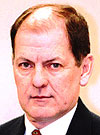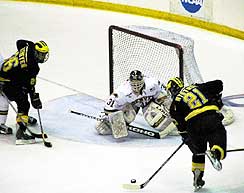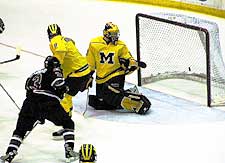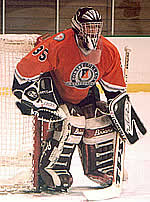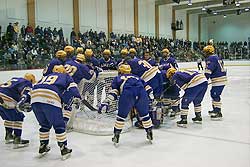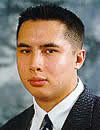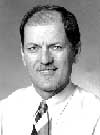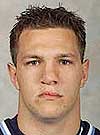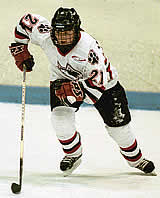Predictably, the announcement of this year’s tournament brackets prompted much weeping and wailing and gnashing of teeth — particularly in the West, given that the three lowest seeds were kept in the East due to the NCAA’s mandate minimizing air travel in the wake of September 11.
As usual with the 12-team field, there was concern about the fairness of four teams getting byes, and heartbreak over the so-close bids by Alaska-Fairbanks, Northern Michigan, and UMass-Lowell, the next three teams in the PairWise Rankings.
Nonetheless, we could pretend that the Future is Now for a 16-team college hockey tournament. With the NCAA taking steps in that direction, this dream could come true as soon as next season. And as the USCHO message boards have indicated, fans have been enjoying the process of working out just how that might have looked this year.
So I took out my PWR and came up with 16-team options that might incite a mixed bag of rejoicing and outrage. In both cases, I assumed that College Hockey America would get an autobid (probable for next year), meaning that Wayne State would be in the tournament in addition to the three aforementioned at-large teams.
I am also reimaginging that the September 11 travel stipulation was lifted in time for the NCAA Selection Committee to consider these alternatives.
First Approach: “National PairWise”
In this approach, the attempt would be to optimize matchups based on the selection criteria, as represented by the PWR. That is, put PWR number one against 16, two vs. 15, three vs. 14, etc., then tweak the resulting pairings to avoid intraconference matchups in the first round. After that, assign the games to four different regional sites, giving preference to host teams and the highest seeds. Here’s how it might turn out:
First Round (winners in each regional play each other next day)
Albany, N.Y.
UNH (1) vs. Harvard (16)
St. Cloud (8) vs. Cornell (9)
Worcester, Mass.
BU (4) vs. Northern Michigan (12)
Michigan State (5) vs. UMass-Lowell (13)
Ann Arbor, Mich.
Minnesota (3) vs. Wayne State (14)
Michigan (6) vs. Colorado College (10)
Minneapolis or Denver
Denver (2) vs. Quinnipiac (15)
Maine (7) vs. Alaska-Fairbanks (11)
Pros: This would be a truly national tournament, offering fans intriguing matchups between teams that rarely play each other. Top seeds would be rewarded by playing a low seed, but the elimination of first-round byes means they still would have to play, instead of resting up and scouting their opponent. Three of the four sites would be likely to sell out, with consistent big draws nearby.
Cons: Obviously, it would be hard to have a regional in Minneapolis when the Frozen Four is in St. Paul, and with the benefit of hindsight it’s easy to say that Denver would work well — but could you project what second West site would be best in a given year? Also, those who feel that a more regionalized approach is necessary to guarantee a big gate (i.e., the current NCAA Selection Committee) might endure more anxiety over ticket sales.
Second Approach: “Closer To Home”
The goal here would be to preserve East-West regions (ranking eight teams in the East and eight in the West) in order to maximize attendance while still avoiding same-conference matchups in Round One (and Round Two if possible). If not for the 400-mile quasi-limit placed on travel due to September 11, this would be similar to the current approach — though one could argue that a better option would be to swap the Maine-UAF game to the West, pulling Michigan State-Colorado College to Worcester to avoid a probable Hockey East matchup in Round Two.
Albany, N.Y.
UNH (1E) vs. Harvard (8E)
Cornell (4E) vs. UMass-Lowell (5E)
Worcester, Mass.
BU (2E) vs. Quinnipiac (7E)
Maine (3E) vs. Alaska-Fairbanks (6E)
Ann Arbor, Mich.
Denver (1W) vs. Wayne State (8W)
Michigan (4W) vs. St. Cloud (5W)
Minneapolis or Denver
Minnesota (2W) vs. Northern Michigan (7W)
Michigan State (3W) vs. Colorado College (6W)
Pros: Creating two different regions of eight teams apiece makes it easier to ensure that each site gets the best possible attendance without compromising too much on pairings.
Cons: It’s almost impossible to avoid some same-conference matchups in Round Two, losing national flair and potentially creating imbalances between the regions.
Both options provide intriguing matchups for the college hockey fanatic, while the increased number of regional sites — if chosen well — would be likely to draw fans effectively as long as some effort is made to put high-seeded and/or consistently well-drawing teams within driving distance of their fan bases.
The biggest challenge of a four-site regional system would be picking the optimal second site in the West. While Worcester, Providence, Albany, and even Hartford seem like they would be consistently plausible in the East due to shorter distances, the West is tougher to project — as the poorly attended regional in Madison showed recently. Consistently having a regional in Michigan seems like a safe bet, while another in Minnesota or Colorado would be a bit more dicey, perhaps, depending on who is good in a particular year.
After coming up with the scenarios, I ran them by Boston University coach Jack Parker. It goes without saying that he loved the idea a 16-team tournament. “The fact is, there are plenty of teams to put a qualified tournament together for 16,” Parker said.
Although the Terriers eked out a bye in this year’s tournament, Parker suggested that the current approach is unfair.
“16 takes away the biggest problem we have with 12, and that’s the bye,” said Parker. “So not only do you let a few more teams into the tournament, you get rid of the bye, and I think you’re going to make more money for the NCAA, because you’re going to have full houses for certain in the East…. And I think if you get in the right buildings out West, you should be able to do better as far as that draw is concerned as well.
“So the two things the NCAA is basing it on is ‘Will we lose money?’ — no, we won’t,” Parker said. “And two, ‘Is it fair? Do we have enough quality teams?’
“It’s much more fair than 12 teams with the bye, and we’ve proven that in a lot of years you’d have absolutely quality teams. Certainly more quality teams than they have in the NCAA [basketball] tournament, where you have teams getting beaten by 60 points. It would be a very competitive field. … Niagara beat UNH a few years ago, and Mercyhurst gave Michigan a real battle last year.”
So with agreement on the sweetness of a 16-team field, what did Parker think of the alternatives?
“We need to avoid having replays of last week’s games, so the ‘National Pairwise’ is much better than the ‘Closer To Home’ Approach,” Parker said.
The Terrier coach disagreed with the notion that the gate will suffer if a more nationalized approach is utilized. In reality this year, if all goes according to form, BU will face conference foe Maine for the fifth time this season in its first game, then the winner will play for the fourth or fifth time against UNH.
“We go to the national tournament, and we have to play someone from our own league again?” Parker said. “I think the fans say, ‘We have to go see another BU-Maine game?’ They’ll show up, but they’d rather have us play Minnesota, probably.
“You feel like you’re comparing us to the nation now, and not just a replay of last week’s tournament,” Parker added. “I think that presents a problem, but with four regional sites and 16 teams I think you’ll solve that problem pretty easily:
“There will be times when four teams from Hockey East or four teams from the WCHA will make it, and you’ll have to be careful where you put them all.”
Although excited about an expanded tournament, Parker still yearns for more East-West action throughout the brackets. This year the Committee guaranteed an East-West final instead of allowing one conference to gain a majority of the berths in the Frozen Four — making a powerful statement for the strength of that conference.
“I’m very, very disappointed that they’ve gone about it with this national seed kind of thing, so that one plays four, and Western schools or Eastern schools can wind up being the No. 1 seed in the West,” said Parker, whose team narrowly avoided losing the No. 2 seed in the East to one of three Western teams.
“I think having a flair for the East-West to start with and making sure you’ve got — especially with the bye — two Eastern schools getting the bye and two Western schools getting the bye, that was the right way to do it. But after that, let’s criss-cross over; let’s have some Western schools play some Eastern schools and see how they go.”
It certainly is tantalizing to contemplate how the Terriers might have fared against Colorado College or Northern Michigan instead of yet another matchup with a perennial Hockey East adversary. But over-regionalization is just one concern. In an interview with USCHO’s Jayson Moy, championship committee chairman Jack McDonald made some statements that struck me as downright bizarre:
“We have the opportunity to create more automatics in a very, very easy way,” McDonald said. “Do you know what they are? Forget if we don’t expand the bracket. There are two more automatics right under our nose and no one is talking about it. The Ivy League and Big Ten.”
What? Have the likes of Columbia, Penn, Iowa and Indiana started recruiting Division I hockey players? Are Michigan State, Michigan, Yale, and Cornell breaking away from the CCHA and ECAC to form their own leagues? Or is McDonald hypothesizing that teams such as Harvard and Minnesota should have two shots at an autobid? It’s hard to fathom, either way.
Sure, giving the MAAC an autobid probably helped pave the way to 16, but let’s not get carried away on the automatic bids. It’s not as if a 32-team tournament would make a lot of sense, perhaps for a matter of decades.
I also wonder to what degree McDonald is relying on, say, market research when he questions whether only the “very few” among the “hockey purists” would attend a regional in the East if the likes of CC and St. Cloud crashed the party. I think it’s safe to say that as long as you have one or two schools such as UNH, Maine, BU, and Cornell, there will be plenty of fans to ensure $ucce$$.
It’s also a bit of a reach when McDonald says that “the Frozen Four allows what you want. It gives you that interregional play.” Um, well, if the top seeds hold up — or even if BU loses to Maine — the Committee will have one Hockey East semifinal and one WCHA semifinal. Ugh.
To be fair, the Committee was saddled by the NCAA’s travel stipulations this year; plus Mercyhurst’s loss and Harvard’s win in conference tournaments ended up forcing fewer interconference pairings.
It is, though, curious that the NCAA chose to make the stipulation apply only to tournaments with “less than 64 teams”; thus September 11 concerns didn’t keep the basketball Selection Committee from sending Ohio State to Albuquerque (instead of Chicago) and UCLA to Pittsburgh (instead of Sacramento), for instance. It appears to be a double standard — unless there is an explanation other than a financial one.
I guess that I’m one of those fans whom McDonald is urging to put down the microscope and enjoy the tournament. And I will — but not without visions of 16 dancing in my head, and not without imagining how college hockey can regain that national flair that has seeped away considerably in the last few years.
